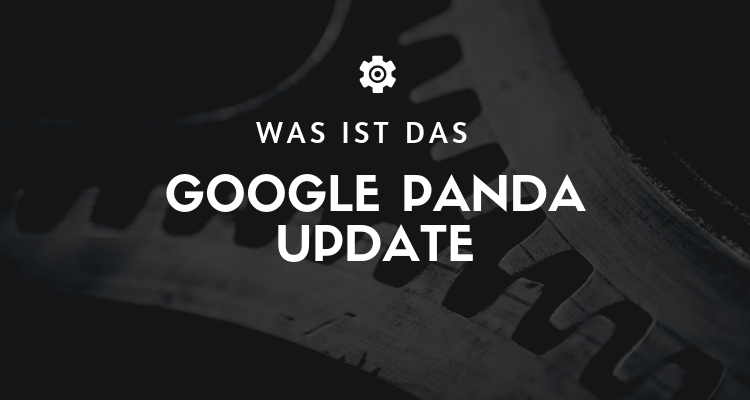What is the Google Panda Update?
Panda is the official name of a Google algorithm update designed to reduce the spread of low-quality, "thin" content (Thin Content) in search results and reward unique, compelling content with better rankings.
At the time Panda was founded, user complaints about the increasing influence of "Content Farms". Google's Panda algorithm assigns pages a quality classification that is modeled on human quality ratings and used as a ranking factor.
Websites that recover from the effects of Panda do so by revising pages with low-quality content, thus adding new, high-quality content. In addition, removing filler words and superfluous ads do their positive part to improve the user experience in terms of content.
What did the Panda update do?
The Google Panda Update was a major update to Google's algorithm that was first introduced in February 2011. The main purpose of this update was to reward websites with high-quality content and penalize those with low-quality or "thin" content. The name "Panda" comes from a Google engineer, Navneet Panda, who was instrumental in the development of the update.
Think of the Panda update as a strict teacher checking students' homework (web pages). Those that are well-researched and carefully crafted (high-quality content) get a good grade, while those that are sloppily and lovelessly done (low-quality content) get a bad grade.
Before the Panda update was introduced, many websites with thin, poorly written or duplicated content were able to achieve high rankings in Google's search results. This meant that users often came across pages that offered little or no added value. With the Panda update, Google became better at assessing the quality of a website's content and ranking accordingly.
Some examples of factors that the Panda update takes into account are:
- The length and quality of the content: Short, superficial articles or those that are full of grammar and spelling mistakes tend to be rated negatively by the Panda Update.
- Duplizierte Inhalte: Websites that copy content from other sites without providing additional value or a new perspective can be penalized by the Panda Update.
- Keyword-Stuffing: Excessive and unnatural repetition of keywords in a text to manipulate the search engines is also detected and penalized by the Panda update.
- User Experience: Factors such as high bounce rates or low dwell time of visitors on a website can indicate that the page does not offer any added value and thus be rated negatively by the Panda Update.
Overall, the Panda update has helped to improve the quality of the Search results in Google by rewarding high-quality content and penalizing low-quality content. Therefore it is for Webmaster It is now more important than ever for SEOs to create high-quality, relevant and useful content in order to be successful in search results.
Google Panda Update Myths
Der am weitesten verbreitete Mythos über Panda ist, dass es um doppelte Inhalte (Duplicate Content). One of our Linblings Google spokespeople - John Mueller - has made it clear that duplicate content will be targeted regardless of Panda. Many Google employees have already emphasized that Panda will target unique content (Unique Content), but this goes deeper than penalizing plagiarized and duplicate content. What Panda is looking for is truly unique information that offers users unique added value.
John Mueller also told a blogger that removing technical duplicates is actually a very low priority and that they should instead "think about what differentiates your site from the absolute top site in your niche".
The source of this confusion is probably Singhal's questionnaire asking "Are there duplicate, overlapping or redundant articles on the website on the same or similar topics with slightly different Keyword-Variations?
This is not about technical duplication, but about the redundancy of content, where novel content is rewarded more than derivative and "squeezed" content.
« Back to Glossary Index

